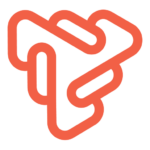Think of it like this: Imagine tossing out those dusty filing cabinets and replacing them with a super-powered hiring machine. An ATS lets you automate all the boring stuff, so you can focus on what really matters: snagging the best talent!
So, grab your coffee (or your favorite drink!), and let’s chat about how an ATS can revolutionize your hiring process. We’ll break down the key features and show you why this isn’t just a fancy tool, it’s a game-changer for modern recruitment. Ready to ditch the paperwork and find your next superstar? Let’s dive in!
What is a Recruiting ATS?
First things first, let’s clarify what we mean by a recruiting ATS. An Applicant Tracking System is software designed to streamline the recruitment process. From posting job ads to managing applications and communicating with candidates, an ATS handles various recruitment tasks, making life easier for recruiters and hiring managers.
Imagine you’re sifting through hundreds of resumes manually—sounds exhausting, right? That’s where an ATS comes in. It automates many of the repetitive tasks, allowing you to focus on what really matters: finding the best candidates for your roles.
Key Benefits of Using a Recruiting ATS
Before we dive into the core features, let’s talk about why you need an ATS in the first place. Here are some of the top benefits:
- Streamlining the Hiring Process: An ATS automates time-consuming tasks, such as resume sorting and interview scheduling, making your recruitment process more efficient.
- Enhancing Candidate Experience: With automated communication and a smooth application process, candidates have a better experience, which reflects positively on your employer brand.
- Improving Collaboration: An ATS allows your recruitment team to collaborate effectively, with shared access to candidate profiles and feedback.
- Data-Driven Decisions: With built-in analytics and reporting, you can track key metrics and make informed decisions to improve your hiring strategy.
Core Features of a Recruiting ATS
Now, let’s break down the core features that make an ATS indispensable.
Resume Parsing
Resume parsing is one of the standout features of any good ATS. This technology extracts key information from resumes, such as contact details, work experience, and skills, and organizes it into a structured format. This means no more manually entering data or trying to decipher different resume formats. It saves you time and reduces the risk of human error.
Job Posting Automation
With job posting automation, you can create a job ad once and post it across multiple job boards with just a few clicks. This feature often includes customizable job templates, making it easier to maintain consistency in your job descriptions. Plus, you can schedule posts to go live at optimal times, ensuring your job ad gets maximum visibility.
Candidate Database Management
An ATS serves as a centralized repository for all your candidate data. You can easily search, filter, and manage candidate profiles. Advanced search functionalities allow you to quickly find candidates with specific skills or experience, making your talent pool more accessible.
Communication Tools
Effective communication is crucial in recruitment. An ATS integrates email and messaging systems, enabling you to communicate with candidates directly from the platform. You can send automated follow-up emails, schedule interviews, and even send personalized messages, all while keeping a record of your interactions.
Workflow Automation
Workflow automation is a game-changer. You can set up customizable workflows for different stages of the recruitment process, from initial application to final offer. This ensures that every candidate goes through the same steps, maintaining consistency and fairness. It also means less manual tracking and more time focusing on high-value tasks.
Interview Scheduling
Coordinating interviews can be a logistical nightmare. An ATS simplifies this with automated interview scheduling. It integrates with calendar systems, allowing candidates to pick available slots, and reducing back-and-forth emails. Some ATS even support team interviews, collecting feedback from multiple interviewers in one place.
Reporting and Analytics
To improve your hiring process, you need to know what’s working and what’s not. An ATS provides real-time analytics and reporting features. You can track key metrics such as time-to-hire, source of hire, and candidate drop-off rates. These insights help you identify bottlenecks and make data-driven improvements.
Compliance and Security
Recruitment involves handling a lot of sensitive data. A good ATS ensures compliance with employment laws and data protection regulations. Features like consent management, data encryption, and secure access controls protect candidate information and keep your process compliant.
Advanced Features to Look for in a Modern Recruiting ATS
While the core features are essential, advanced features can give you a competitive edge.
AI and Machine Learning
Artificial Intelligence (AI) and Machine Learning (ML) are making waves in recruitment technology. An ATS with AI capabilities can improve candidate matching, predicting which candidates are the best fit for your roles. Machine learning algorithms can also analyze past hiring data to enhance future recruitment strategies.
Mobile Accessibility
In today’s fast-paced world, recruiters need to work on the go. Mobile-friendly ATS platforms allow you to manage recruitment tasks from your smartphone or tablet. Candidates also appreciate mobile-friendly application processes, making it easier for them to apply from their devices.
Integration Capabilities
Your ATS should integrate seamlessly with other HR tools and platforms. Whether it’s your HRIS, payroll system, or background check provider, integration capabilities streamline data flow and reduce manual data entry. APIs (Application Programming Interfaces) are often used to enable these integrations.
Choosing the Right ATS for Your Organization
With so many options available, how do you choose the right ATS? Here are some tips:
- Identify Your Needs: Start by identifying your organization’s specific needs. Do you need advanced AI features, or are you looking for a simple, user-friendly interface? Make a list of must-have features and nice-to-haves.
- Evaluate Options: Research different ATS solutions and compare them based on your criteria. Look for user reviews, case studies, and demo videos to get a sense of how each platform works.
- Consider Scalability: Choose an ATS that can grow with your organization. Ensure it can handle an increasing number of job postings and applications as your company expands.
- User-Friendliness: The best ATS is one that your team will actually use. Look for intuitive interfaces and robust customer support to help you get the most out of the system.
- Cost: Finally, consider your budget. While it’s important to invest in a good system, you don’t want to break the bank. Compare pricing plans and see what fits your financial constraints.
An Applicant Tracking System is more than just a tool; it’s an investment in your organization’s future. By understanding the core features and benefits, you can choose an ATS that enhances your recruitment process, improves candidate experience, and ultimately helps you find the best talent.
Ready to take the next step? Schedule a free demo and explore how Tacitbase can transform your recruitment process.
Happy recruiting!

